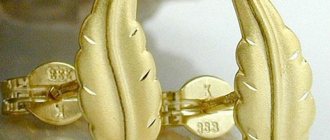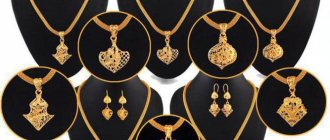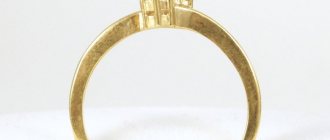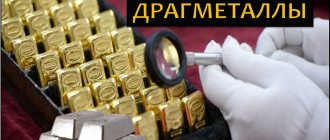Silver is one of the most popular metals in the world, discovered in ancient times. Centuries ago, it was worth more than gold, as the pure silver metal alloy was prized in the market due to its rarity. But, over time, people began to dilute the substance with other impurities. Therefore, there are now a sufficient number of samples of this substance.
Where did the name “sterling silver” come from, what is it? There are the following versions of the origin of the name. According to the first, the metal was so named because of the pound of sterling, which was in use in the Middle Ages. In the mid-12th century, King Henry 8 of England issued a decree according to which a coin made of 925 silver came into use. This alloy was considered equal to ordinary silver, from which money was then made. This pound sterling was used for large purchases.
The second version states that silver, which contained only 8% impurities, was produced in the Esterling region in Saxony (Germany) since the 11th century. The name came from this subject. The coins that were issued in the northern region of the country were used to pay with England during allied actions. The then ruler of the country liked these strong coins so much that he soon put them into use. Actually, two versions of the origin of the name of the metal follow from each other.
925 sterling silver
Sterling metal is popular because it consists of 92.5% pure silver, and only 7.5% of it is copper. The alloy in question is very difficult to melt, since it requires a certain temperature and special exposure. But the metal ultimately becomes very durable, high quality, and has a long service life. In the Middle Ages, these coins were used for trade.
Some customers ask about what 925 sterling silver is. This is silver coinage that has been melted down so that it does not lose quality. The alloys are just as strong and reliable. Therefore, 925 metal is considered the most popular at present. This substance is used to make not only precious jewelry, but also cutlery, statues, and candlesticks.
What is the difference?
The main difference between Sterling Silver and White Gold is that Sterling Silver is an alloy of silver with copper , while White Gold is an alloy of gold with nickel, silver, palladium and platinum.
Silver and gold are very valuable chemical elements that are very popular in making jewelry and many other products due to their non-reactive nature and shiny appearance. There are very few alloys of these elements. Sterling Silver is a silver alloy containing small amounts of copper, while White Gold is a gold alloy containing white metal such as nickel, silver, palladium and platinum.
Content
- Overview and main differences
- What is Sterling Silver
- What is White Gold
- What is the difference between Sterling Silver and White Gold
- Conclusion
What is Sterling Silver?
Sterling silver is an alloy of silver. The majority of this alloy is silver (about 93%), while the other element is usually copper (about 7%).
925 Sterling Silver Bar
Pure silver is very soft, but this alloy is relatively hard and durable due to the presence of copper. However, it tarnishes easily. This occurs due to oxidation of copper when exposed to air.
Sterling Silver Ring
Additionally, silver sulfide (black) can form when exposed to airborne sulfur compounds. To reduce tarnish in a silver alloy, metals other than copper are used. Some examples of these metals are: germanium, zinc, platinum, silicon and boron. This alloy is used to make forks, spoons, knives, surgical and medical instruments, musical instruments and even coins.
What is White Gold?
White gold is an alloy of gold with white metal alloys such as nickel, silver, palladium and platinum. The properties of this alloy depend on the proportions of each white metal used with the gold. For example, the addition of nickel produces a high-strength alloy. But if we use palladium with silver, they produce a soft and malleable alloy.
White gold wedding rings
In addition, we can add some copper to increase the ductility of the alloy. The most common use of this alloy is in jewelry making. These jewelery pieces are further plated with rhodium to enhance its strength, durability and give it a shiny appearance.
What is the difference between Sterling Silver and White Gold
Sterling Silver is an alloy of silver and White Gold is an alloy of gold. That's why Sterling Silver has silver and copper, while White Gold has gold alloyed with white metals such as nickel, silver, palladium and platinum. This is the main difference between Sterling Silver and White Gold.
Additionally, Sterling Silver tarnishes easily due to copper oxidation and the formation of silver sulfide, unlike White Gold, which does not tarnish but may eventually yellow if not plated with rhodium. Uses of these two metals: Sterling Silver is used to make items such as forks, spoons, knives, surgical and medical instruments, musical instruments and coins, while White Gold is used to make jewelry.
Conclusion – Sterling Silver vs White Gold
Alloys are mixtures of metals. To obtain the desired properties of metals, they are mixed with each other. Sterling Silver and White Gold are very valuable alloys. The difference between Sterling Silver and White Gold is that Sterling Silver is an alloy of silver with copper, while White Gold is an alloy of gold with nickel, silver, palladium and platinum.
The difference between regular silver and sterling silver
What is the difference between the silver we are used to and the one we are considering? Precious metal, due to hydrogen sulfide in the air, becomes dull. It is the loss of beauty due to tarnishing that is considered the main disadvantage of jewelry made from noble substances. But sterling silver does not have this disadvantage. The fact is that the less copper in the alloy, the less susceptible it is to the influence of sulfur compounds.
Since ordinary noble metal is soft and ductile, it is used exclusively for jewelry and is not used in the production of dishes and interior items. Therefore, all expensive silver tableware sets and coins are made of sterling metal. As you can see, it is easy to distinguish it from the usual one, if it is not a decoration.
Title and history
Sterling silver is a common alloy of silver with a purity of 925. This purity means that a kilogram of the alloy contains at least 925 grams of silver. The master alloy in this alloy is represented by copper, although previously there were attempts to add other metals to the alloy, for example, zinc, germanium, titanium, platinum and boron. But it turned out that copper is an ideal alloy, since it gives the alloy the necessary strength and wear resistance.
From the very name of the alloy one can understand that it has something to do with the British national currency - the pound sterling. Indeed, the 925 alloy has its own history. So, in the twelfth century in England there was a silver coin called “sterling”. This monetary unit was considered very valuable, because it could be used to buy expensive household items, jewelry and other valuables. 240 silver coins had the same weight as one pound. If such an amount of sterling had a mass less than that of one pound, then the coins were considered counterfeit.
There is also a second version of the origin of sterling silver. Thus, in the eleventh century, in Northern Germany, the minting of special silver coins was established, intended for the implementation of settlement transactions with England. This version was put forward by the historian W. Pitchebeck in 1955.
How to store and care for the product
Basic tips for proper care of sterling silver:
- the storage location should be a dark and dry place to eliminate the risk of the sun hitting the surface of the metal (it darkens as a result);
- Although sterling silver products do not lose their visual appeal for a long time, it is not always possible to follow all the rules for storing them. If the metal is darkened, you should clean it with a soft cloth soaked in coin cleaning liquid (you can buy it at a household chemical store).
- Under no circumstances should mechanical cleaning be carried out; it will only scratch the surface of the product;
- when a special liquid does not help, you should make a solution consisting of hydrogen peroxide, ammonia and tooth powder. After the execution, it is necessary to wipe the metal with a clean, dry cloth.
Advice! If you doubt your cleaning abilities, you should contact a jewelry salon. They will professionally restore the natural appearance of the product.
How to distinguish silver from silver plating
The easiest way is to find a brand. Silver-plated items are not branded because too little precious metal was used to make them.
If there is no mark on your item, you can carefully look at its shape and condition. If the item is silver-plated, the coating in some places may have worn off or started to fall off - look for cracks and chips. Finally, jewelry made entirely of silver does not rust. If rust is noticeable on silverware or jewelry, it means that you are looking at silver plating.
Chinese sterling silver
The main suppliers of products made from sterling silver are the countries of Southeast Asia. China ranks first among them. The volume of supplies is growing every year, because the quality of the jewelry produced is in no way inferior to that of products produced in other countries.
Sterling silver from China is cheaper than its European counterparts. This is due to the fact that labor in this Asian country costs much less than in Europe.
But still, you should be careful when buying Chinese jewelry. Since some sellers pass off low-quality material as high-grade metal. When purchasing a sterling gold item online, it is worth reading the comments and reviews before purchasing the item. Chinese silver is cheaper than its European counterparts, but not cheap! This means that all cheap jewelry is fake.
Consumer reviews say that 85% of gold from China is of good quality. The country is famous for its jewelry craftsmen and extensive experience of technologists.
Versions of the origin of the name
- The main version of the etymology of sterling silver is the one that says that it came from a coin used in England in the 12th century - the sterling;
- There is another explanation - this name comes from a famous family from Germany - the Easterlings. Money was minted in honor of this family, and the British allegedly took a fancy to these coins and they entered into a trade agreement with the Germans.
If we adhere to the second version, then the ancestors of the silver sterling coin are the Germans, not the British. Later, this coin became widespread throughout the planet.
Price
Every year the demand for sterling gold increases, which leads to an increase in prices for products made from this metal. Experts predict a continuation of this trend: a decrease in prices should not be expected in the near future. The price of the noble metal per gram is $0.8. This means that finished precious items, taking into account the difficulty of manufacturing and markups, cannot cost less than $5.
| Regular ($/g) | Sterling ($/g) | Chinese sterling ($/g) |
| 0,5 | 0,8 | 0,7 |
Table 1 - comparison of the cost of regular, sterling and Chinese sterling gold.
Silversmiths
Queen Victoria patronized the manufacturers, ordering cutlery and decorations from them. Some of them were subsequently awarded a Royal Warrant.
Among the favorites of the royal court was Robert Garrard, who specialized in the production of figurines. In 1843, Victoria appointed Garrard as the first official jeweler to the crown: he designed numerous pieces and jewelry for the royal family. Garrard & Co has been trusted to work with famous gemstones such as the Cullinan Diamond (Great Star of Africa) and the Koh-i-Noor Diamond.
In 1848, Garrard created the America's Cup, the oldest international sports trophy. To this day, a bottomless silver jug is the most prestigious and coveted prize in yachting.
Elkington & Co, established in 1836, made its contribution to the development of the craft. Its founders, brothers George and Henry Elkington, patented revolutionary methods of electrotyping, galvanizing and gilding, and won many awards at World Exhibitions.
John Hunt and Robert Roskell were among the jewelers of the British court and other European royal families. The company was founded by Paul Storr in 1819, later successively renamed Storr & Mortimer (1822-38), Mortimer & Hunt (1838-43) and finally Hunt & Roskell (1843-97).
Works created by Paul Storr adorn the exhibition of the State Hermitage. A large number of exhibits came to Russia thanks to dynastic ties between the two powers. Being a passionate Anglophile, Nicholas I amassed an impressive collection of English silver, which includes household items, cutlery, and sports trophies. One of the prize cups is made in the form of three connected horse heads. This early Victorian work combines the characteristic neoclassical acanthus leaves with a finely detailed, naturalistic body shape.
Each of the silversmiths had a unique style: their products today form the pride of the collections of such museums as the Metropolitan in New York and the Victoria and Albert Museum in London.











